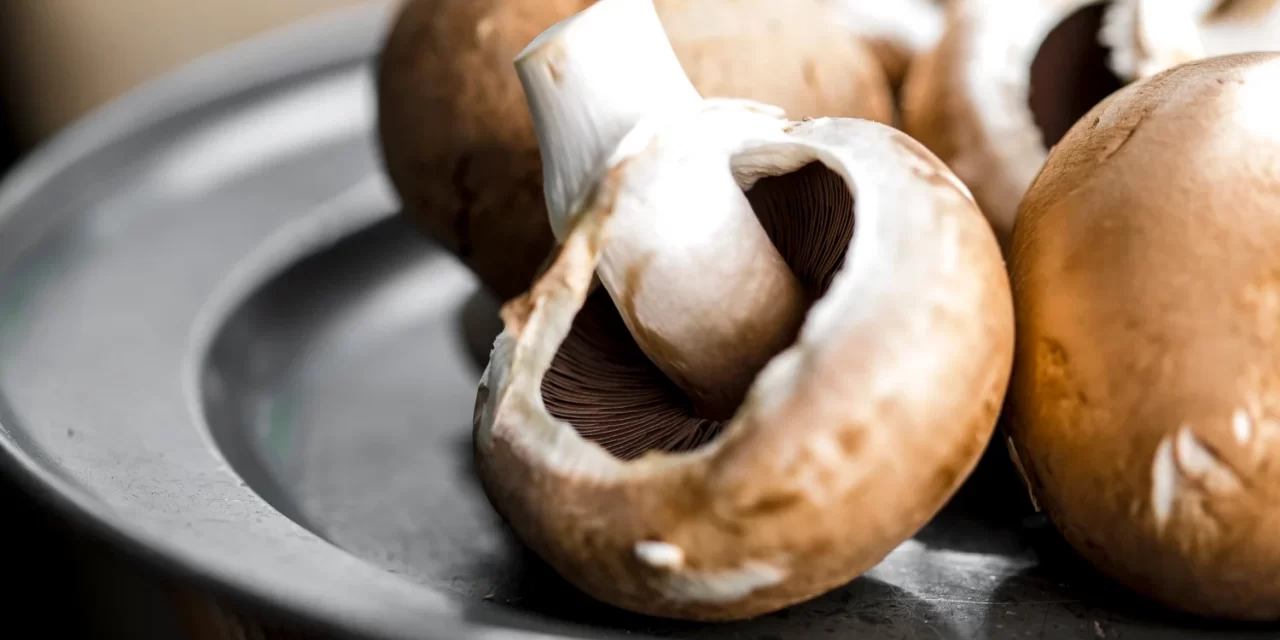Mushrooms are foods that can be very beneficial for health and not causing any negative impact on the environment. However, numerous types of mushrooms offer us different benefits. There are 40,000 species of mushrooms and fungi. As the autumn season brings the best time to consume this food, we will take a look at the different types that there are and some of their properties.
3 types of mushrooms and their benefits
Shiitake Mushrooms: This type of mushroom comes from Asia and is a very good source of antioxidants, iron and is loaded with vitamins such as B12. Not only does it have benefits such as improving skin health, lowering cholesterol, and maintaining good energy functions; they also have a taste and texture, unlike any other mushroom.
2. Portobello: This mushroom is from the mushroom family and is especially rich in potassium and protein. Unlike Shiitake mushrooms, its price is lower, so it is more common to find them in supermarkets. Due to their nutrients and texture, they are a good meat substitute. Portobello can be cooked on the grill or raw, but this mushroom is worth trying with its sweet and fresh flavor!
Recipe
3. Níscalos: This type of mushroom is considered a superfood since it is also one of the few foods that include VD. The chanterelles contain very low-fat content and are rich in potassium, favoring intestinal transit. To cook them, the most common is grilled or cooked, in which case it is important to cook them enough to avoid being heavy. In addition, due to its texture, the flavor is very similar to that of meat, offering the opportunity to add them to different and tasty dishes. Do you dare to cook?
Vegan recipes
Benefits of mushrooms and mushrooms for the planet
While it is clear that these foods offer numerous benefits for the human body, they also do so for the environment. In the first place, trees could not survive without fungi, which is why these are key to preserving forests. With this in mind, some are edible (such as Shiitake mushrooms) that we can also take advantage of. On the other hand, since mushrooms live in symbiosis with trees, it is important to protect forests and biodiversity. Studies suggest that it is possible to produce edible mushrooms without damaging the environment, but this requires regulations and policies that encourage sustainable forest management.
The benefits and properties of mushrooms
The rains and humidity permeate the Spanish undergrowths. It is cold, but this is not inconvenient for some peculiar hunters, accompanied by their wicker baskets, to go into the forest in search of new prey. Children and adults head down and, treading cautiously, set out to collect tasty loot. They don’t hunt animals, and they look for mushrooms!
Mushrooms are one of the star products of autumn. Its great gastronomic value is well known to all. The most prized mushrooms are priced at more than € 40 per kilo, so it is not surprising that when this time of year arrives, many fans of “mushroom hunting” go out to look for their favorite variants: boletus edulis, morels, chanterelles … There is something for all tastes.
In addition, it should be noted that mushrooms have very interesting properties at a nutritional level, which we will see below:
They present proteins of high biological value.
They contain beneficial minerals such as iron, potassium, copper, or phosphorus.
They are a magnificent source of trace elements, such as sulfur, boron, chlorine, zinc, and manganese.
They are a good source of unsaturated fatty acids and fiber.
They are low in calories, so they are ideal for weight loss diets.
There is no doubt that mushrooms are an unusual ingredient in the kitchen. From the modest mushroom (check out this salad) to the luxurious truffle, mushrooms can make delicious dishes. And you don’t need to break the coconut to enjoy mushrooms in the kitchen. Some of the most popular recipes are extremely simple, like some delicious chanterelles with garlic.
Amanita Muscaria
The Amanita Muscaria is a toxic mushroom. If we look for mushrooms, we must be very careful with the specimens that we take home.
However, despite the many benefits that mushrooms can bring us, we must always be cautious. There are many toxic mushrooms and even deadly ones. If we want to start collecting mushrooms, it is highly recommended (if not essential) to take an identification course and acquire a manual book that helps us to discern which species the examples correspond to.
Places that we have found. And, above all, when in doubt, do not gamble.
Mushroom qualities
Mushrooms are a low-calorie, fat-free, cholesterol-free food containing a modest amount of fiber and more than a dozen minerals and vitamins.
In mushrooms, we can find copper, potassium, magnesium, zinc, and several B vitamins such as folic acid.
In addition, they are also rich in antioxidants such as selenium, or GSH, which are believed to protect cells and reduce chronic diseases and inflammation.
That is why nutritionists consider that if we want to increase the intake of antioxidants, we would need to eat about 100 grams of mushrooms or mushrooms every day (if it is shiitake or maitake, as they have 4 times more, a quarter will suffice).
“Vegetable steak”
We also know that mushrooms are rich in water and do not provide more than 3% carbohydrates and 15 kcal per 100 grams.
In addition, they are distinguished by a greater richness in proteins (between 2.1 and 3.3%) and are even capable of stimulating the general response to the attack of any infection, according to a study carried out in Australia.
And its richness in soluble fibers is also a known asset against traffic disorders and, in particular, constipation.
All this, added to its content of proteins and vitamins in particular group B, has caused that sometimes they speak of the mushrooms as the “vegetable steak.”
It may interest you: How is the half a thousand poisonings that occur each year from eating mushrooms?
Antioxidants and free radicals
Mushrooms contain proteins, vitamins, minerals, and antioxidants that can have a variety of health benefits.
One of the main ones is the ability of antioxidants to help the body eliminate free radicals. Poisonous by-products of metabolism and other bodily processes that can accumulate in the body and, if they do so in excess, can damage cells and lead to various health conditions.
Among the antioxidant agents in mushrooms are selenium, vitamin D, and choline, an essential nutrient.
Does it prevent cancer?
According to the National Cancer Institute, it seems proven that the antioxidant content in mushrooms can help prevent lung, prostate, breast, and other cancers.
In addition, they are a food that contains vitamin D, which can also help in prevention.
What about diabetes?
Several studies claim that people who consume a lot of fiber may have a lower risk of developing type 2 diabetes. And it can also help those who already have it by reducing blood glucose levels.
A cup of sliced raw mushrooms, weighing 70 gr. Provides almost 1 gram of fiber. And the Dietary Guidelines recommend that adults consume between 22.4 and 33.6 grams of dietary fiber each day, depending on gender and age.





